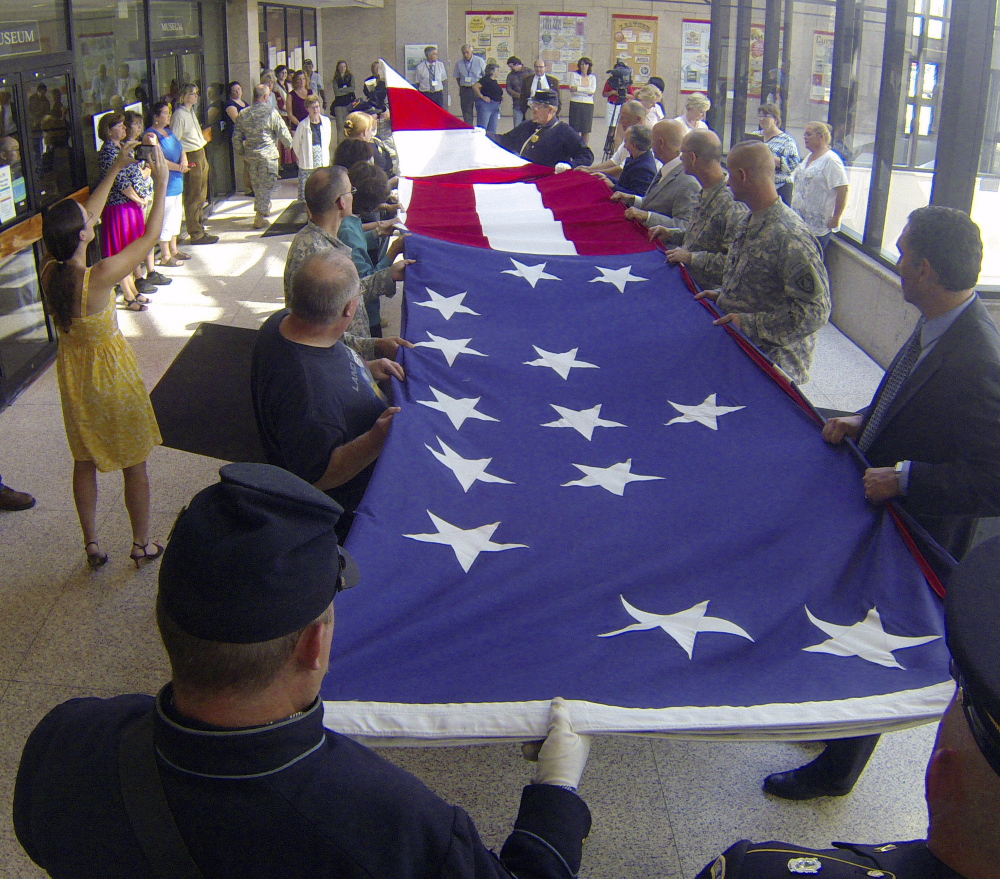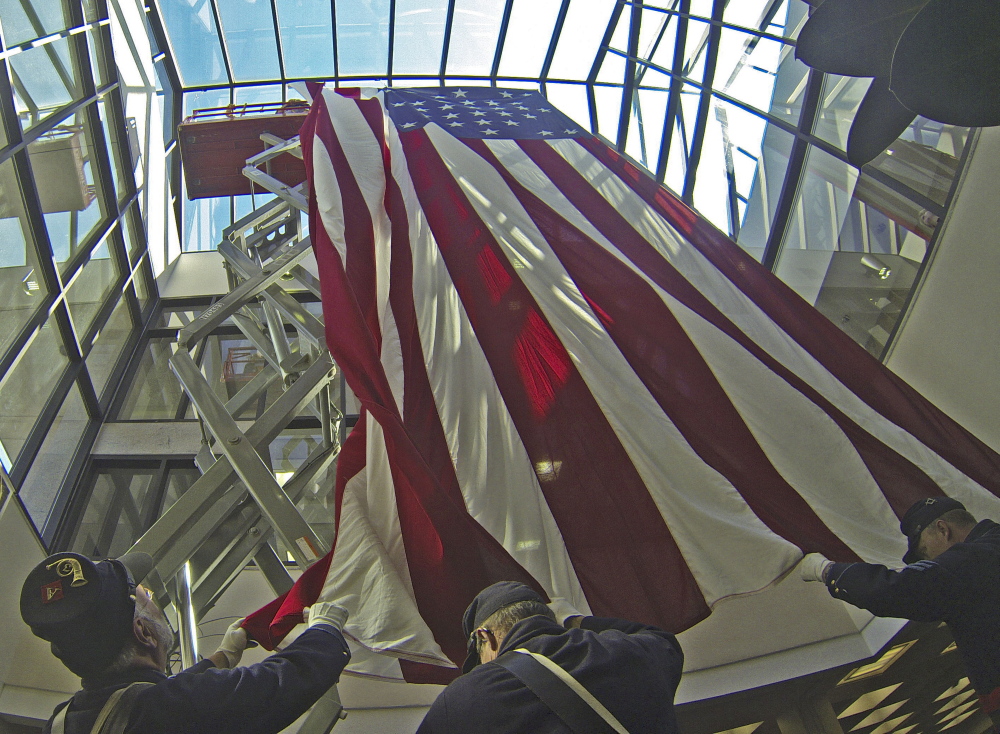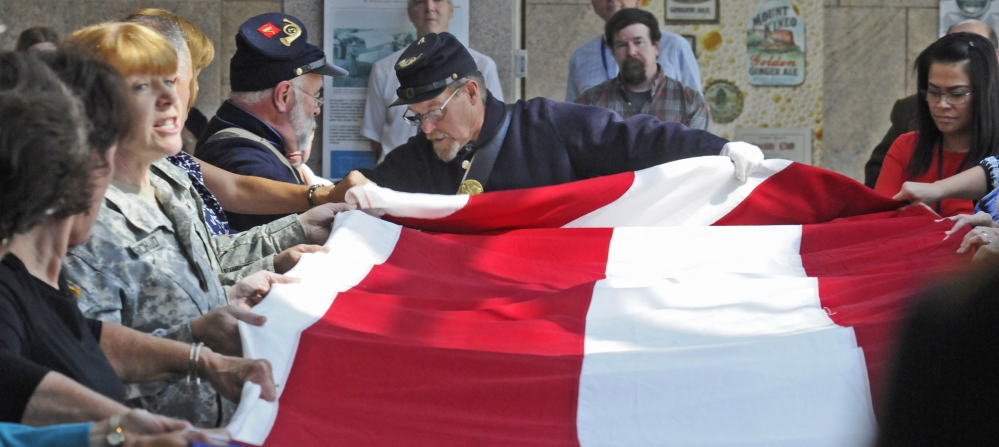AUGUSTA — A forerunner of the modern U.S. flag on display in the atrium of the Maine State Cultural Building was retired in a stirring ceremony Wednesday and returned to its owners.
The flag, designed in the same configuration as the 1860 Fort Sumter flag, has been displayed in the atrium since 2013, when it was put up as part of Maine’s ongoing commemoration of the 150th anniversary of the Civil War. The flag, which is 18 feet by 33 feet, was commissioned by and remains the property of the Pejepscot Historical Society.
“We wanted to get it back before it faded,” State Archivist David Cheever said.
The flag was lowered carefully during a brief retirement ceremony that drew a few dozen people, including Secretary of State Matthew Dunlap, most of whom were called upon to help with the ceremonial folding. Re-enactors from the 3rd Maine Volunteer Regiment led the ceremony, which Cheever said is reminiscent of the one performed by soldiers leaving the service after returning from the Civil War.
“To have them want to be part of this is really special,” Cheever said.
Jennifer Blanchard, executive director of the Pejepscot Historical Society, said her agency was excited to regain possession of the flag, which it had commissioned around 2010.
“At this point I’m not sure what the future holds for the flag,” Blanchard said. “We’ll have to put it to some worthy purpose.”
The garrison flag is the forerunner of the modern U.S. flag. Blanchard said documents held by the Pejepscot Historical Society, which owns and operates the Joshua Chamberlain Museum in Brunswick, indicate Chamberlain – a general honored for his heroism during the Battle of Gettysburg – had a garrison flag draped across the ceiling in his library. Chamberlain’s flag has never been recovered, but the society wanted to commission a flag to match it. When the first flag was returned, the group realized it was too large to hang in Chamberlain’s house, so they had a smaller version made. The first flag later was loaned to the state.
Cheever said the flag is a replica of one of the more significant artifacts from the Civil War. Maj. Robert Anderson, who commanded Fort Sumter in South Carolina in April 1861 when Confederate forces opened fire, took the flag with him after giving up control of the fort to the South. Anderson returned with the flag in 1865, when the Union regained control of the fort. Cheever said Anderson was buried with the flag a few years later.
“Those things resonate through time,” Cheever said. “It mattered so much to Anderson. It mattered so much to Chamberlain. It matters so much to these guys that we wanted to have a ceremony to capture the connections through the generations.”
Cheever said the state will continue to remember the sesquicentennial of the Civil War. He described the war as the most disruptive and transformative event in Maine history, and said many of the changes in modern society, from health care to gender relations, can be traced directly to it.
For that reason, Cheever said, it was important to honor the garrison flag with a proper retirement.
“The retirement of the flag has an emotional ending to it,” Cheever said. “It’s the symbol of our country, and the symbol of their service and sacrifice.”
Send questions/comments to the editors.




